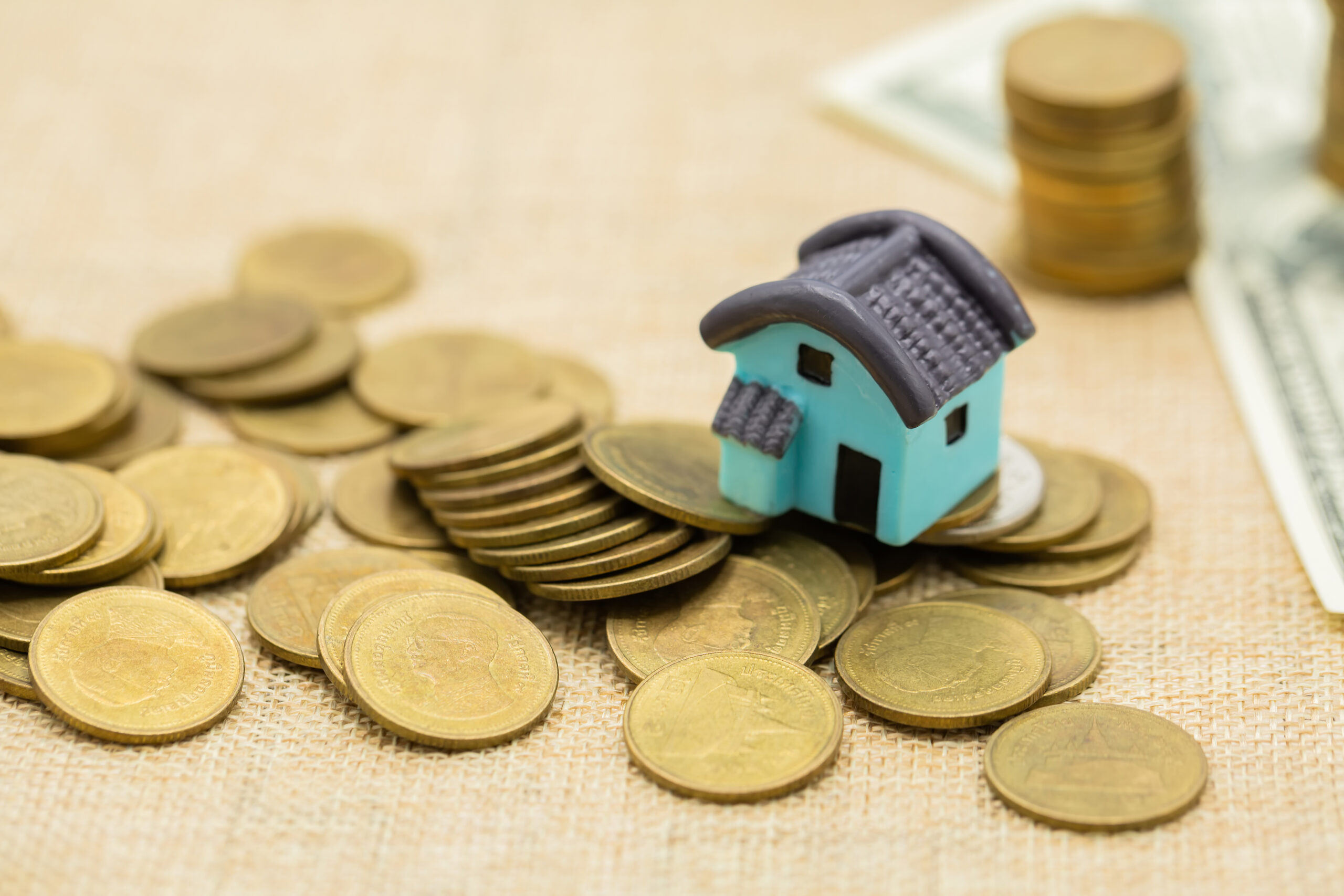If you’re a homeowner looking to tap into your home equity for financial flexibility, then a Home Equity Line of Credit (HELOC) can be a powerful tool. Not only can it help with big expenses like home improvements or debt consolidation, but it can also offer significant savings over time if managed properly.
But how do you calculate those savings? Understanding how to calculate your HELOC savings can help you make smarter financial decisions. In this guide, we’ll walk you through the entire process, from the basics of how a HELOC works to advanced tips for maximizing your savings.
What is a HELOC? Understanding the Basics
Before diving into the math, let’s take a moment to understand exactly what a HELOC is.
A Home Equity Line of Credit (HELOC) is a loan that lets you borrow against the equity in your home, typically offering a lower interest rate than other types of credit because it’s secured by your property. Unlike a traditional home loan, where you receive a lump sum of cash, a HELOC gives you a revolving credit line, similar to a credit card, allowing you to borrow money as needed.
Key Features of a HELOC:
- Credit limit: The maximum amount you can borrow, based on your home’s equity.
- Draw period: This is typically 5 to 10 years, during which you can borrow from the line of credit.
- Repayment period: After the draw period ends, the repayment period begins, usually lasting 10 to 20 years.
- Variable interest rates: The interest rate on a HELOC can fluctuate, typically tied to the prime rate.
A well-managed HELOC can help you save on interest and reduce your overall debt, but it’s important to track how much you owe and the interest you’re paying. This is where calculating your savings comes in.
If you’re looking for an even faster way to eliminate your mortgage debt and gain financial freedom, check out the 5-Day Cashflow Empire Live event, where experts will show you how to pay off your home in just five years!
Why Calculate HELOC Savings? The Importance of Understanding Your Potential Savings

You may be wondering why it’s crucial to calculate your HELOC savings. The answer lies in the fact that a HELOC offers financial flexibility, but with that flexibility comes the need for careful management.
By understanding how to calculate your savings, you can:
- Reduce your interest payments: HELOCs often come with variable interest rates, which can change over time. Tracking your payments and the interest charged will help you manage your debt more effectively and avoid surprises.
- Pay off debt faster: If you’re using your HELOC to pay off higher-interest debt, calculating your savings can help you see how quickly you can eliminate that debt.
- Optimize your repayment strategy: By regularly calculating your savings, you can adjust your strategy to pay off your HELOC faster, saving you money on interest.
In short, calculating your savings helps you stay on top of your financial goals and ensures you’re making the most of your HELOC.
How Does a HELOC Work? Key Features to Know
To calculate your HELOC savings, you first need to understand how it works. There are a few important factors to consider when calculating your savings, including the interest rate, the amount you borrow, and the terms of your repayment.
Credit Limit Based on Home Equity
Your HELOC credit limit is determined by the amount of equity you have in your home. Equity is simply the difference between your home’s market value and what you owe on your mortgage. For example, if your home is worth $300,000 and you owe $200,000, you have $100,000 in equity.
Typically, lenders will allow you to borrow up to 85% of your home’s appraised value, minus your outstanding mortgage balance. So, if your home’s value is $300,000, and you owe $200,000, the most you could borrow would be around $55,000.
Draw Period vs. Repayment Period
The draw period is when you can borrow from your HELOC. During this time, you may only be required to make interest payments. The repayment period is when you can no longer draw from your HELOC, and you begin paying back both the principal and interest.
The terms of the draw and repayment periods will affect how much you owe and how much you can save in the long run. For example, drawing from your HELOC for a longer period may result in higher interest payments over time.
Discover How to Pay Off Your Home in 5 Years or Less
Variable Interest Rates
Most HELOCs come with a variable interest rate, meaning your rate can change depending on market conditions. While this can mean lower initial rates, it can also lead to higher payments if interest rates rise.
Understanding how your interest rate works and predicting how changes might affect your payments can help you calculate your potential savings.
Step-by-Step Guide to Calculating HELOC Savings

Now that you have a solid understanding of how HELOCs work, let’s dive into the step-by-step process of calculating your savings.
Step 1: Determine Your HELOC Credit Limit
Start by calculating how much equity you have in your home. Subtract your mortgage balance from your home’s appraised value to determine your available equity.
For example:
- Home value: $300,000
- Mortgage balance: $200,000
- Home equity: $100,000
Next, check your lender’s HELOC terms to find out the maximum amount you can borrow. Most lenders will allow you to borrow up to 85% of your home’s value minus your current mortgage balance.
Step 2: Calculate Your Interest Rate
Your interest rate will play a key role in calculating your HELOC savings. Since most HELOCs have variable rates, it’s important to track both your current rate and how changes in the market might affect it.
For example, if your interest rate is currently 4% and the prime rate increases by 1%, your rate could rise to 5%. This would affect your monthly payment and total interest paid over time.
Step 3: Estimate Your Draw Period and Repayment Period
Once you have your credit limit and interest rate, estimate how long you’ll be in the draw period and how long the repayment period will last. This will give you a rough idea of how long it will take to pay off your HELOC and how much interest you’ll pay.
Step 4: Calculate Monthly Payments and Interest Savings
Use an online HELOC calculator or a simple spreadsheet to estimate your monthly payments. Keep in mind that during the draw period, you may only need to make interest payments, while in the repayment period, both principal and interest payments will be required.
For example:
- Loan amount: $50,000
- Interest rate: 5%
- Draw period: 10 years
- Repayment period: 15 years
Using a calculator or spreadsheet, you can estimate your monthly payments and track how much interest you’ll pay over the life of the loan.
Tools and Resources to Help You Calculate HELOC Savings
Several tools can help you calculate your HELOC savings, making the process easier and more accurate:
- HELOC Calculators: Many financial websites offer free online calculators that can estimate your monthly payments, total interest paid, and how long it will take to pay off your HELOC.
- Spreadsheets: You can also create your own spreadsheet to track your payments, interest rates, and remaining balance.
- Financial Advisors: For personalized advice, consider working with a mortgage advisor or financial planner. They can help you determine the best repayment strategy and identify opportunities for savings.
Tips for Maximizing HELOC Savings
Once you’ve calculated your savings, there are a few strategies you can use to maximize them:
Pay Extra Toward Principal
Whenever possible, make extra payments toward your HELOC principal. This will reduce your balance more quickly, leading to less interest paid over time. Even small, additional payments can have a big impact.
Refinance for a Lower Rate
If your HELOC interest rate is high or if rates have dropped since you opened your line of credit, consider refinancing. Refinancing your HELOC can secure a lower interest rate, saving you money on interest over the long run.
Stay on Top of Your Payments
Always make your payments on time to avoid late fees and higher interest rates. The longer your balance remains high, the more you’ll pay in interest.
Common Mistakes to Avoid When Calculating HELOC Savings
As you work to calculate your savings, there are a few common mistakes to watch out for:
- Ignoring Variable Interest Rates: It’s easy to assume that your interest rate will stay the same, but rates can fluctuate. Always account for potential changes.
- Not Considering the Total Loan Term: Look beyond the monthly payments and consider the total cost over the life of the loan, including interest.
- Overlooking Fees: Some HELOCs come with annual fees, early repayment penalties, or other hidden costs that can eat into your savings.
Conclusion
By following the steps in this guide, you can better understand how to calculate your HELOC savings and make smarter decisions about your home equity. A well-managed HELOC can help you pay off high-interest debt, finance home improvements, and even save money on your mortgage.
Ready to Take Control of Your Mortgage?
If you’re ready to take the next step in managing your mortgage or paying off your home faster, consider joining The 5-Day Cashflow Empire Live event. Learn how to pay off your mortgage in 5 years or less without changing your lifestyle. Click the link below to get started:
Discover How to Pay Off Your Home in 5 Years or Less
Frequently Asked Questions (FAQs)
How often do HELOC interest rates change?
HELOC interest rates are usually variable and can change based on fluctuations in the prime rate or other market conditions. It’s important to monitor these changes and calculate their impact on your payments.
Can I pay off my HELOC early without penalty?
Many HELOCs allow you to pay off the balance early without a penalty. However, be sure to check the terms of your specific loan, as some lenders may charge early repayment fees.
What happens after the draw period ends?
Once the draw period ends, you can no longer borrow from your HELOC. During the repayment period, you will begin paying back both principal and interest, often resulting in higher monthly payments.
For more tips on optimizing your HELOC savings, check out our other articles or consult with a mortgage advisor. Start taking control of your financial future today!
Explore More Resources to Save on Your Mortgage
Affiliate Disclaimer: BestMortgages.co may include affiliate links, which allow us to earn a small commission when you make a purchase through them. This helps support our site at no extra cost to you. Thank you for your support!




0 Comments